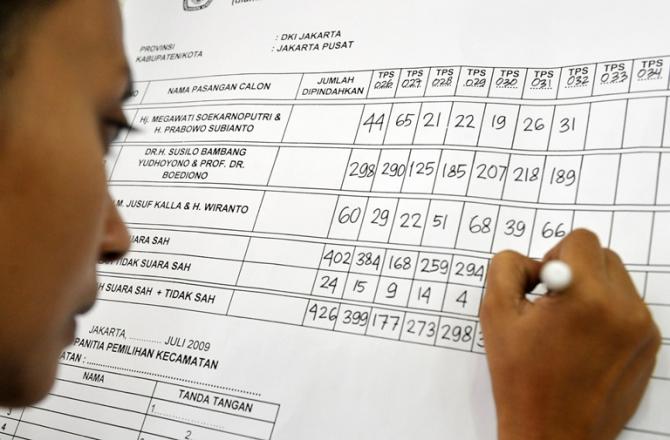
Balloting model and vote equality
The balloting model adopted in the current election law contains inconsistencies. Voters are required to cast votes for one political party and/or one candidate. Votes cast for a candidate will automatically be counted as one vote for him or her and one for the political party they represent. However, a vote cast only for a party will not determine the winning candidate; the vote will only determine the seat for the party. In other words, voters who cast their votes in accordance with the 1945 Constitution, which designates political parties as the election participants and not individuals, will get a “half vote,” while voters who cast ballots for a candidate get “one full vote.” This contravenes the “one person, one vote” principle since the value of votes cast for a political party are unequal to votes cast for candidates.
Proportional with plurality of votes
There are at least three methods to allocate seats based on the Proportional Representation formula: the Hare quota with the largest remainder method to allocate seats, which tends to benefit small parties; the D’Hondt method, which tends to benefit major parties; and the Sainte-Lague method, which is the most fair due to its neutrality to party size. Indonesia applies the Hare quota, which is more beneficial to small parties. The preferred formula also contains inconsistencies under the frame of a proportional electoral system. On one side, one of the purposes of the election law is to reduce the number of political parties (through, among other things, a 3.5 percent threshold to enter parliament). However, this preferred formula opens opportunities for small parties to secure seats.
The most striking inconsistency in Indonesia’s proportional electoral system is between the determination of winning candidates and candidacy patterns. The winning candidates are determined based on the number of votes, while candidacy pattern is based on the candidates’ number on the party list. Hence, legally the listing of candidates based on criteria established by the parties and the quota policy of women being 30 percent of candidates and having at least one female for every three candidates on the party list in a district, are ineffective. Nevertheless, empirically, candidacies based on list number and quota policy and the small-number quota policy for women were effective in the 2009 election, since votes for candidates with a low number. Whether the pattern will be similar in 2014 will primarily depend on the behavior of Indonesian voters.







%20resized.png)
